Navigating the Complexities of Basement Bathroom Installation
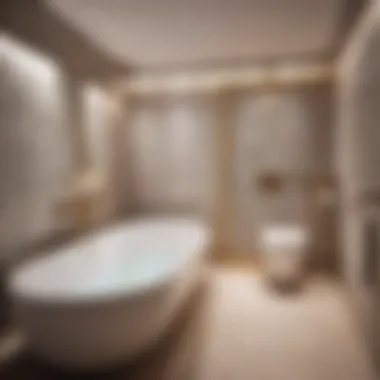
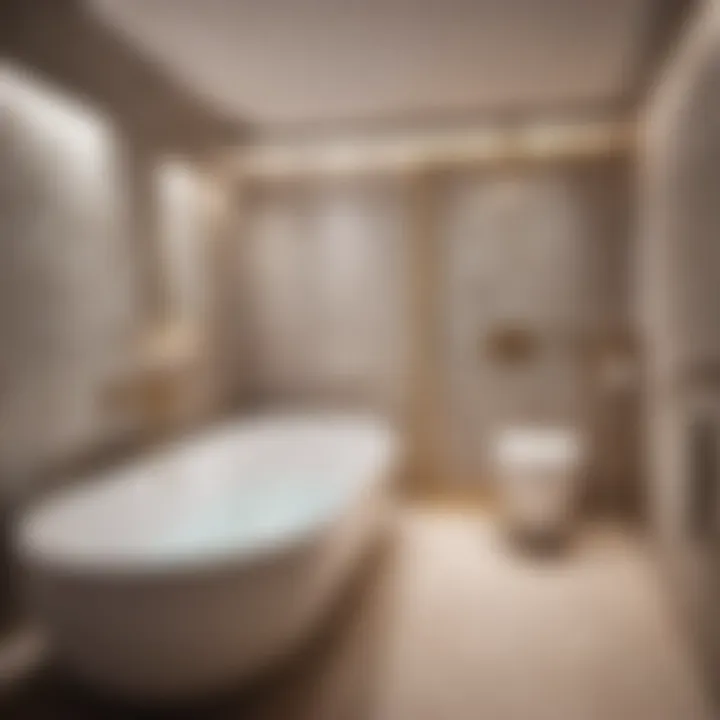
Materials:
- PVC pipes: 10 feet x2
- PVC connectors: various sizes x8
- PVC cement
- Sink with faucet assembly
- Toilet
- Shower/tub unit
- Waterproofing membrane
- Drain pipes: 4 inches x2
- Vent pipes: 2 inches x2
- Flooring tiles: measurements vary
- Drywall sheets: measurements vary
- Copper pipes: 10 feet x2
- Pipe insulation
DIY Steps:
- Planning: Measure the basement space to determine the layout for the bathroom. Consult local building codes to ensure compliance.
- Utility Connections: Locate existing plumbing lines to tap into for the new bathroom. Install necessary shut-off valves and connect to water supply and drainage system.
- Structural Modifications: Reinforce the basement floor to support the weight of the bathroom fixtures. Ensure proper ventilation and waterproofing.
- Installation of Fixtures: Install the sink with faucet assembly, toilet, and shower/tub unit following manufacturer instructions.
- Finishing: Apply waterproofing membrane on walls and floors. Install flooring tiles and drywall to complete the bathroom structure.
Technical Aspects:
- Required Tools: Pipe cutter, wrench, tape measure, level, drill
- Timing: Depending on experience, it may take 1-2 weeks
- Critical Techniques: Proper sealing of pipes, waterproofing, and accurate measurements are crucial
DIY project Process:
- Material Preparation: Organize all supplies and tools before starting the project.
- Plumbing Installation: Begin by connecting the main drain pipes and vent pipes. Secure with PVC cement to prevent leaks.
- Fixture Installation: Follow the manufacturer's instructions to install the sink, toilet, and shower/tub unit securely.
- Finishing Touches: Apply waterproofing membrane to prevent moisture damage. Lay flooring tiles and install drywall for a polished look.
Troubleshooting Tips:
- If encountering leaks, check pipe joints for tightness and reapply PVC cement if needed.
- Inadequate ventilation can lead to mold growth, ensure proper airflow in the bathroom.
- Double-check measurements before cutting pipes or installing fixtures to avoid rework.
This comprehensive guide provides detailed steps and technical aspects required to successfully install a bathroom in your basement. Follow the instructions diligently to achieve a functional and well-designed space.
Understanding the Basics of Basement Bathrooms
When it comes to installing a bathroom in a basement, understanding the basics is crucial. This initial phase sets the foundation for the entire project, impacting the feasibility, design, regulatory compliance, and overall success of the endeavor. By grasping the fundamentals of basement bathrooms, homeowners can make informed decisions, foresee challenges, and plan effectively for a functional and aesthetically pleasing space. Exploring this topic provides insights into the specific requirements unique to basement installations, ensuring a thorough approach from start to finish.
Exploring the Feasibility
Assessing the Existing Space
Assessing the existing space in the basement is a pivotal starting point when considering a bathroom addition. This process involves evaluating the available square footage, ceiling height, structural layout, and potential obstructions that may impact the bathroom layout. Understanding the limitations and possibilities of the space allows homeowners to determine the feasibility of incorporating a bathroom and make informed decisions regarding layout and fixture placement. Assessing the existing space early on helps in identifying any necessary modifications or adjustments required for a successful installation.
Evaluating Plumbing Accessibility
Evaluating plumbing accessibility is another crucial aspect of determining the feasibility of a basement bathroom. Assessing the current plumbing infrastructure, locating main sewer lines, and ensuring proper drainage are essential considerations. Examining the accessibility of water supply lines and drain pipes not only influences the bathroom's layout and design but also affects the complexity and cost of the installation. By thoroughly evaluating plumbing accessibility, homeowners can proactively address potential challenges and plan for efficient and effective plumbing connections in the basement bathroom.
Regulatory Considerations
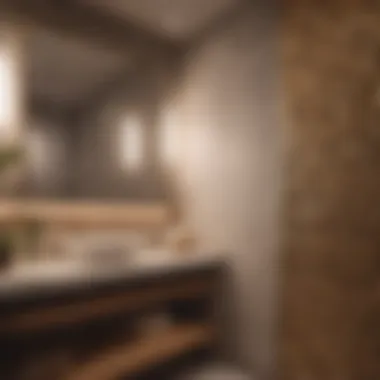
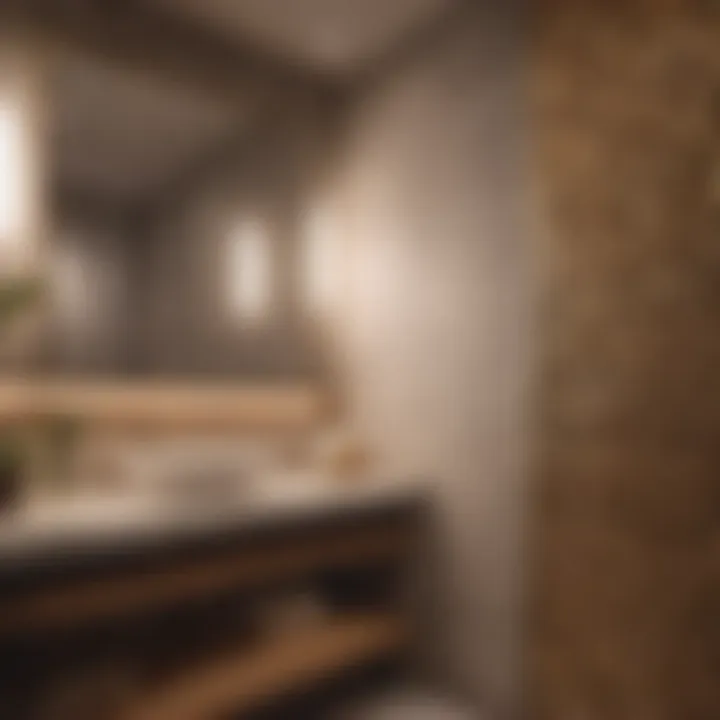
Building Codes Compliance
Ensuring building codes compliance is imperative when installing a basement bathroom to meet safety and structural standards. Complying with local building codes guarantees that the bathroom construction adheres to regulations related to electrical wiring, plumbing installations, ventilation requirements, and overall structural integrity. Understanding the specific building codes applicable to basement renovations prevents costly delays and ensures the safety and functionality of the finished bathroom space. Prioritizing building codes compliance from the outset is a proactive step toward a successful and compliant basement bathroom installation.
Permit Requirements
Obtaining permits for the basement bathroom project is a vital step in the renovation process. Permit requirements vary by location and are necessary for legal compliance and quality assurance. Securing the required permits ensures that the construction meets regulatory standards, undergoes necessary inspections, and is documented for future reference. Adhering to permit requirements not only avoids potential fines or legal issues but also provides homeowners with peace of mind that their basement bathroom project is executed within the parameters of the law and industry regulations.
Structural and Plumbing Challenges
When considering the installation of a bathroom in a basement, addressing structural and plumbing challenges is paramount. These challenges play a significant role in ensuring the functionality and durability of the new bathroom space. Structural modifications may be necessary to accommodate the plumbing fixtures, while plumbing challenges can range from proper drainage to water supply considerations.
Dealing with Drainage
Sump Pump Installation
Sump pump installation is a crucial aspect of managing water drainage in a basement bathroom. The sump pump is designed to pump out excess water that may accumulate in the basement, especially during heavy rains or flooding. By installing a sump pump, homeowners can prevent water damage to the bathroom and the basement structure. The key characteristic of a sump pump is its ability to efficiently remove water from the space, thus safeguarding the area from potential water-related issues. One of the primary benefits of a sump pump is its ability to maintain a dry and safe environment in the basement, reducing the risk of mold and mildew growth. However, a disadvantage of sump pumps is that they require electricity to function, which could be a drawback during power outages.
Proximity to the Main Sewer Line
The proximity to the main sewer line is another critical consideration when installing a basement bathroom. Connecting the new bathroom's drainage system to the main sewer line ensures proper disposal of wastewater. This setup allows for efficient removal of sewage and prevents backups or clogs from occurring. One of the key characteristics of locating the bathroom near the main sewer line is the ease of wastewater disposal, promoting proper sanitation practices within the household. While this configuration offers convenience and practicality, a potential disadvantage could be the cost and complexity of extending the plumbing system to reach the main sewer line.
Ventilation Needs
Proper ventilation in a basement bathroom is essential for maintaining indoor air quality and preventing issues such as mold growth and humidity buildup. Adequate ventilation helps to remove odors, moisture, and airborne contaminants, creating a comfortable and healthy environment.
Installing Proper Ventilation Systems
Installing a ventilation system that includes exhaust fans or windows can help improve air circulation and prevent moisture accumulation. The key characteristic of proper ventilation is its ability to expel humid air and odors from the bathroom, promoting a fresher atmosphere. Proper ventilation systems are beneficial for controlling humidity levels and reducing the risk of mold and mildew formation. However, a potential disadvantage of ventilation systems could be the noise generated by exhaust fans, which may affect the bathroom's tranquility.
Addressing Humidity Concerns
Addressing humidity concerns in a basement bathroom is crucial for preventing moisture-related damage to walls, ceilings, and fixtures. Implementing measures such as dehumidifiers or moisture-resistant materials can help maintain an optimal humidity level. The unique feature of addressing humidity concerns is the focus on controlling moisture levels to protect the bathroom's structural integrity. By managing humidity effectively, homeowners can prolong the lifespan of their bathroom components and enhance indoor air quality. Yet, a potential downside could be the additional cost associated with installing and operating dehumidifiers or moisture barriers.
Water Supply Considerations
Ensuring a reliable and adequate water supply is vital for the functionality of a basement bathroom. Addressing water pressure and considering insulation in cold environments are essential aspects of optimizing the water supply within the basement space.


Ensuring Adequate Water Pressure
Maintaining adequate water pressure in the basement bathroom is key to achieving consistent water flow for fixtures such as sinks, showers, and toilets. Adequate water pressure ensures a comfortable and efficient user experience. The key characteristic of ensuring adequate water pressure is the ability to deliver a steady stream of water at the desired force, meeting the demands of daily usage. This feature enhances user satisfaction and convenience while minimizing potential disruptions in water supply. Despite the benefits, challenges may arise in regulating water pressure fluctuations due to variations in the plumbing system or external factors.
Pipe Insulation for Cold Environments
In cold climate zones, insulating pipes in the basement bathroom is crucial to prevent freezing and potential pipe bursts. Pipe insulation helps maintain water temperature and protect the plumbing system from cold weather conditions. The unique feature of pipe insulation is its ability to safeguard the pipes against freezing temperatures, ensuring continuous water flow throughout the year. By insulating pipes, homeowners can avoid costly repairs and disruptions caused by frozen pipes. However, an aspect to consider is the initial investment required for pipe insulation, which may vary depending on the extent of the plumbing network and the insulation material chosen.
Design and Aesthetic Aspects
Optimizing Space Utility
Choosing Compact Fixtures
Choosing compact fixtures is a key aspect of optimizing space utility in a basement bathroom. Compact fixtures, such as smaller-sized toilets, sinks, and showers, are specifically designed to fit in tight spaces without compromising on functionality. Their streamlined designs and efficient use of space make them ideal for basement bathrooms where square footage is often limited. By incorporating compact fixtures, homeowners can ensure that every inch of space is utilized effectively, creating a more open and comfortable environment.
Utilizing Niche Storage Solutions
In the realm of optimizing space utility, utilizing niche storage solutions is paramount. Niche storage solutions refer to cleverly integrating storage spaces within existing structures, such as recessed shelves or cabinets. These solutions help declutter the bathroom area, providing designated spaces for toiletries, towels, and other essentials without encroaching on valuable floor space. By leveraging niche storage solutions, homeowners can keep the basement bathroom organized and visually appealing while maximizing functionality.
Lighting and Ambiance
When it comes to the design and aesthetic aspects of a basement bathroom, lighting and ambiance play a significant role in setting the overall tone. Proper lighting not only enhances the visual appeal of the space but also impacts the mood and functionality of the bathroom. In this section, we will explore how strategic placement of lighting fixtures and incorporation of natural light sources can transform a basement bathroom into a well-lit and inviting sanctuary.
Strategically Placing Lighting Fixtures
Strategic placement of lighting fixtures is essential for creating an inviting atmosphere in a basement bathroom. By strategically positioning overhead lighting, vanity lights, and accent lights, homeowners can illuminate key areas and create a balanced lighting scheme. Properly placed lighting fixtures can enhance visibility, highlight design features, and contribute to a welcoming ambiance, ensuring that the basement bathroom is both functional and aesthetically pleasing.
Incorporating Natural Light Sources
Incorporating natural light sources is a design strategy that can elevate the ambiance of a basement bathroom. Natural light not only brightens the space but also provides a sense of openness and connectivity to the outdoors. Techniques such as installing larger windows, skylights, or light tubes can introduce natural light into the basement, creating a more refreshing and tranquil environment. By harnessing natural light sources, homeowners can infuse the basement bathroom with warmth and vitality, transforming it into a truly rejuvenating retreat.
Cost and Time Considerations
In the realm of installing a bathroom in a basement, understanding the critical aspect of Cost and Time Considerations is paramount. This section delves into the pivotal role that proper budgeting and project timeline management play in the success of such a complex endeavor. When considering the Cost and Time Considerations, one must meticulously plan and allocate resources to ensure a seamless process from start to finish. By comprehensively addressing these elements, homeowners can achieve their desired basement bathroom while also optimizing efficiency and expenditure.
Budgeting Wisely
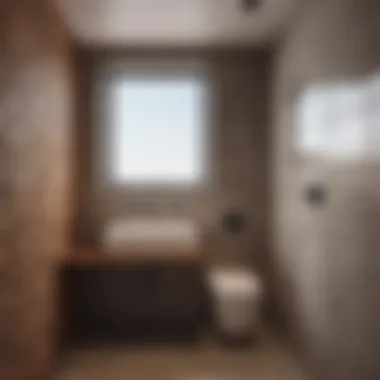
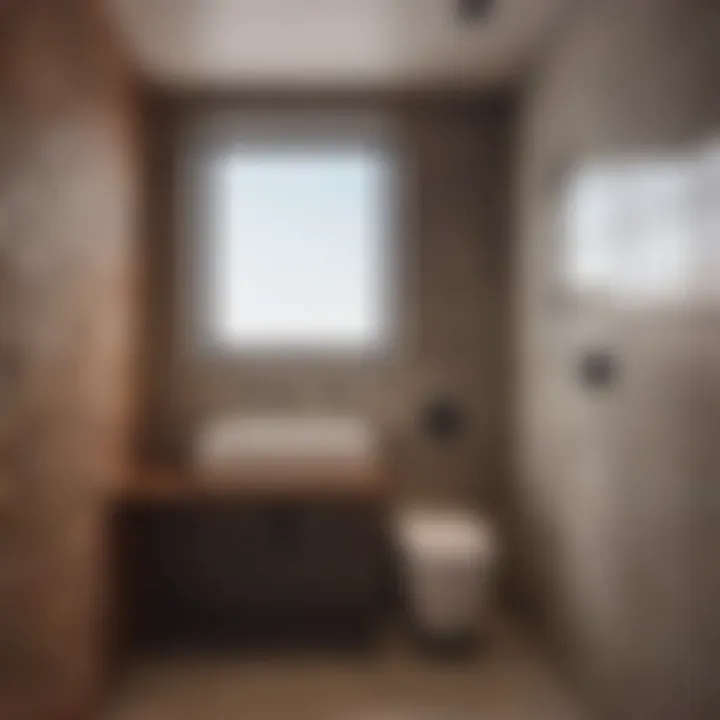
To embark on the journey of creating a basement bathroom, prudent budgeting becomes a cornerstone of the project's success. Material Costs Evaluation stands out as a pivotal component within budgeting protocols. This entails a meticulous analysis of the materials required, their quality, and associated costs. By evaluating material costs extensively, homeowners can make informed decisions about the most suitable materials for their basement bathroom. The careful scrutiny of material expenses not only contributes to budget management but also ensures that the final result aligns with both quality and affordability standards.
On the other hand, Labor Expenses constitute another critical factor within the budgeting realm. The allocation of funds towards labor presents a consideration that directly impacts the efficiency and outcome of the project. Properly budgeting for labor costs involves understanding the scope of work, labor rates, and potential additional expenses. By allocating resources wisely towards skilled labor, homeowners can guarantee a smooth execution of the basement bathroom installation, minimizing setbacks and maximizing the quality of workmanship.
Project Timeline
Efficiently managing the Project Timeline is essential for the timely completion of a basement bathroom installation. Accounting for Unexpected Delays forms a key aspect within this phase of planning. By preemptively considering possible setbacks such as inclement weather, material shortages, or unforeseen circumstances, homeowners can mitigate the impact of delays on the project timeline. This proactive approach ensures that the construction schedule remains on track, avoiding unnecessary extensions or interruptions.
Furthermore, Scheduling Inspections emerges as a crucial step in the project timeline management process. By coordinating and adhering to inspection schedules mandated by building regulations, homeowners can proactively address any compliance issues or structural concerns. Scheduling inspections at strategic junctures of the installation not only facilitates a smooth workflow but also safeguards the integrity and safety standards of the basement bathroom. Adhering to a well-structured inspection timeline guarantees that the project progresses efficiently and meets all regulatory requirements, ensuring a successful outcome for homeowners.
Professional Assistance versus DIY
Hiring Contractors
Vetting Experienced Professionals
Vetting experienced professionals is fundamental to the success of a basement bathroom installation. The meticulous vetting process involves assessing contractors' qualifications, past projects, and reviews to ensure they meet the project's demands. Hiring skilled professionals mitigates risks and guarantees high-quality workmanship, essential for a durable and functional bathroom. The benefit of working with vetted contractors lies in their industry knowledge and ability to navigate potential challenges efficiently.
Obtaining Multiple Quotes
Obtaining multiple quotes is a strategic approach to securing cost-effective and competitive services. Collecting bids from various contractors enables homeowners to compare pricing, timelines, and included services comprehensively. This practice not only aids in budget management but also provides insights into the market rates and quality standards. However, balancing cost considerations with service quality is imperative to avoid compromising the project's outcome.
DIY Pitfalls
Identifying Complex Tasks
Identifying complex tasks in the DIY process highlights the criticality of recognizing one's limitations. Some aspects of basement bathroom installation, such as plumbing and structural modifications, require specialized skills and knowledge. DIY enthusiasts must distinguish between manageable tasks and those best left to professionals to prevent costly errors and safety hazards. Understanding the project's complexities empowers individuals to make informed decisions about their involvement.
Understanding Legal Implications
Understanding the legal implications associated with DIY projects is paramount for homeowners venturing into basement bathroom installations. Adhering to local regulations, obtaining the necessary permits, and ensuring compliance with building codes are essential to avoid legal repercussions. Awareness of liability, safety standards, and insurance coverage can safeguard individuals during the construction phase and safeguard against potential disputes. While DIY projects offer autonomy, overlooking legal obligations can result in fines and setbacks, underscoring the importance of legal compliance throughout the process.
Conclusion
In the realm of installing a bathroom in a basement, the Conclusion encapsulates the vital takeaways and pivotal considerations essential for a successful project completion. This pivotal moment brings together the intricate details explored throughout this article, shedding light on the strategic decisions that are crucial for balancing functionality, aesthetics, and safety within a basement setting. The Conclusion serves as a compass that guides homeowners and renovators towards making informed choices that align with their vision while ensuring adherence to regulatory standards and practicality in design implementation.
Summarizing Key Points
Balancing Cost and Quality
Delving into the aspect of Balancing Cost and Quality unveils a fundamental dynamic in the realm of basement bathroom installation. Balancing these two elements serves as the cornerstone for achieving a harmonious outcome that echoes both affordability and excellence. The key characteristic of Balancing Cost and Quality lies in its ability to optimize resources without compromising on the integrity of the project, making it a popular choice for those navigating the challenges synonymous with basement renovations. By striking a delicate equilibrium between cost-effectiveness and quality craftsmanship, homeowners can expect a result that not only meets their standards but also aligns with their budget constraints. The unique feature of Balancing Cost and Quality revolves around its capacity to leverage cost-saving measures without sacrificing the overall design and performance expectations, providing both financial and aesthetic satisfaction to those embarking on basement bathroom projects.
Ensuring Compliance and Safety
Ensuring Compliance and Safety emerges as a paramount consideration in the intricate process of basement bathroom installation. This crucial aspect underscores the non-negotiable need for adherence to building codes, regulations, and safety protocols, safeguarding the well-being of inhabitants and bolstering the longevity of the constructed space. The key characteristic of Ensuring Compliance and Safety rests on its unwavering commitment to upholding standards that mitigate potential risks, ensure structural integrity, and foster a secure environment within the basement setting. This emphasis on compliance and safety not only reflects a responsible approach to renovation projects but also serves as a preventive measure against liabilities and hazards. The unique feature of Ensuring Compliance and Safety lies in its dual function of promoting regulatory alignment and prioritizing the welfare of occupants, offering a comprehensive safety net that fortifies the foundation of any basement bathroom endeavor.







